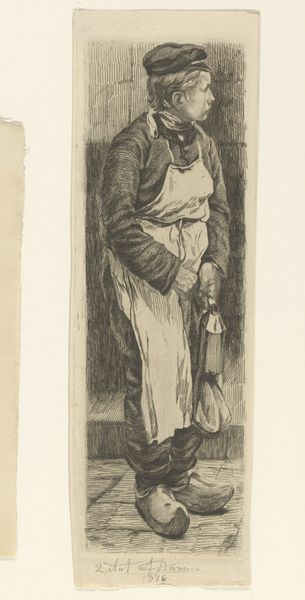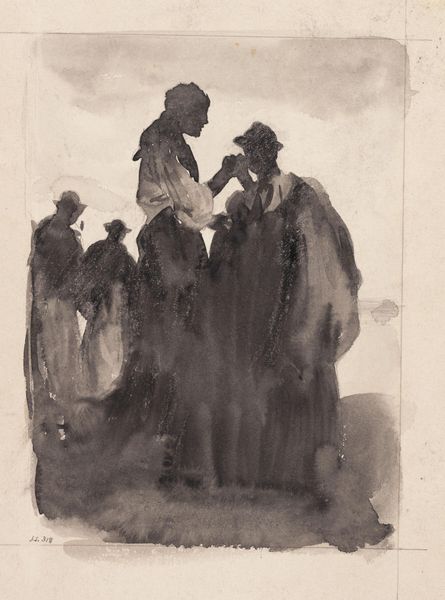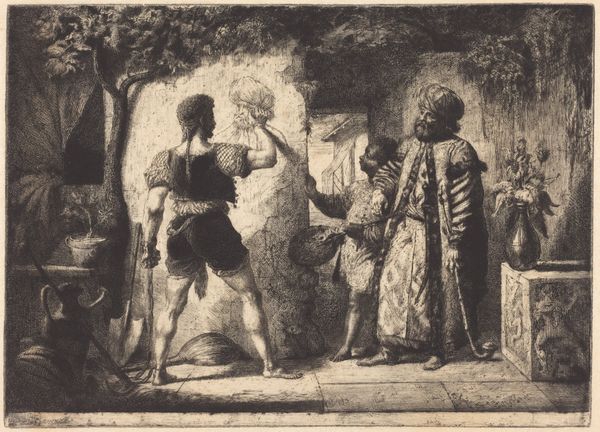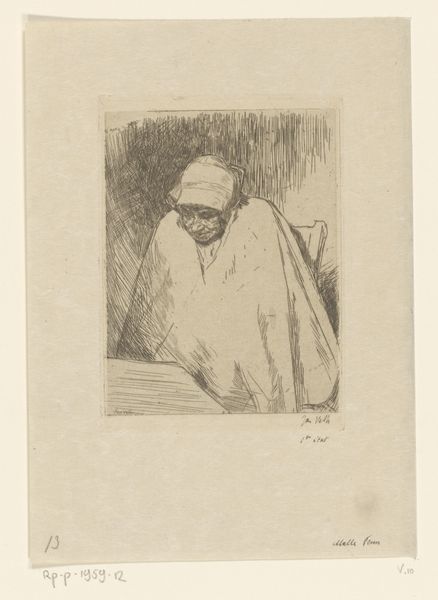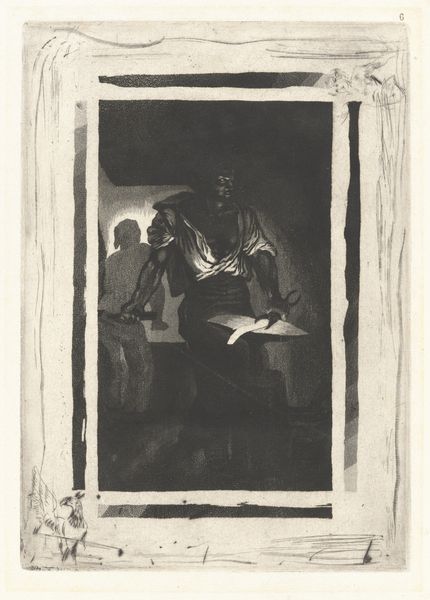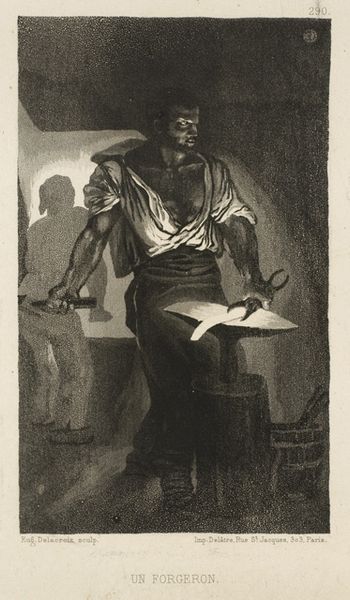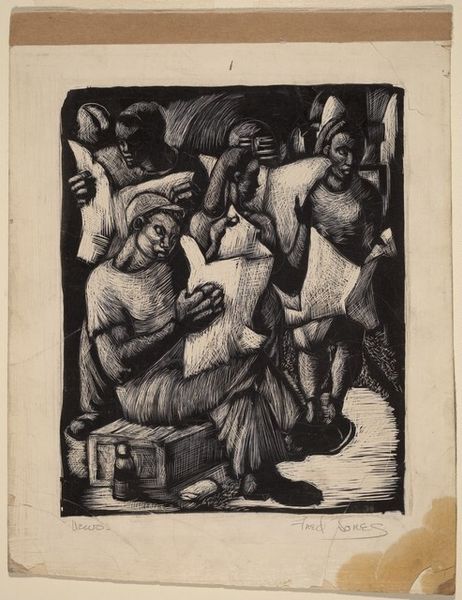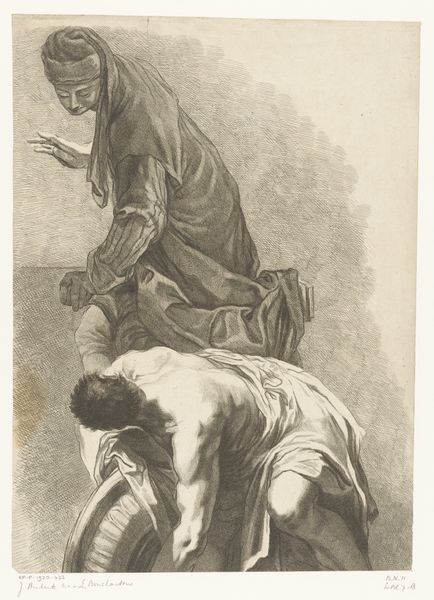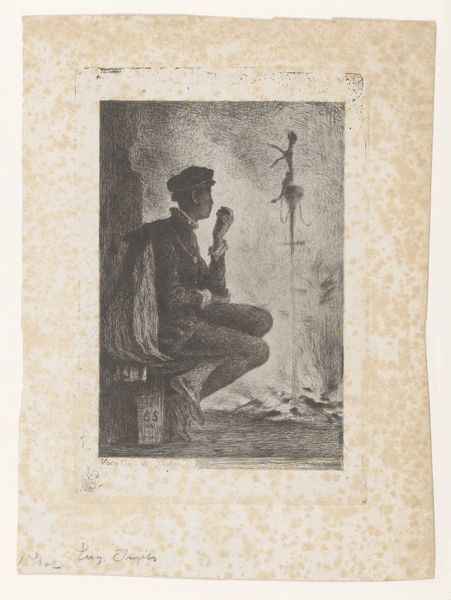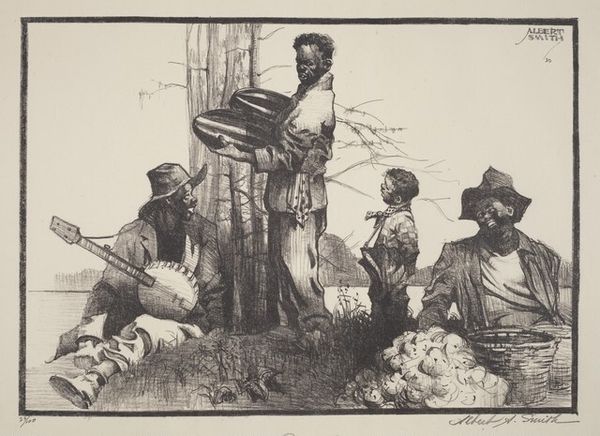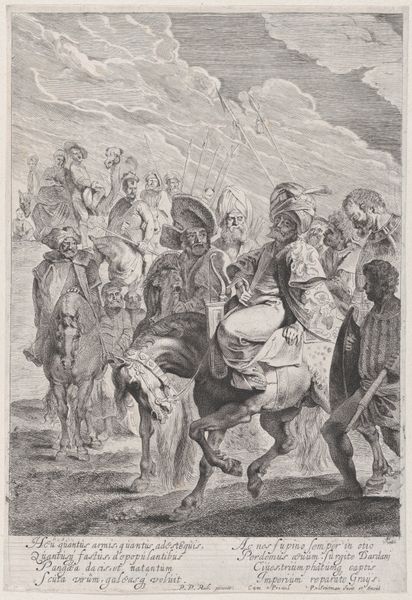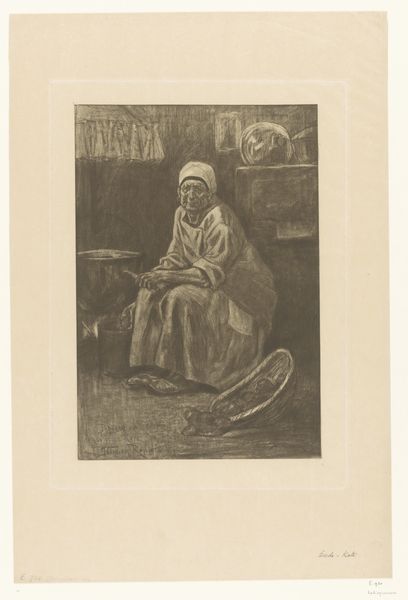
drawing, print, intaglio, pencil
#
portrait
#
drawing
# print
#
intaglio
#
pencil sketch
#
caricature
#
pencil drawing
#
pencil
#
symbolism
#
portrait drawing
#
genre-painting
Dimensions: height 435 mm, width 298 mm
Copyright: Rijks Museum: Open Domain
Curator: Here we have Frans Hogerwaard's "Slangenbezweerder," or "Snake Charmer," created sometime between 1892 and 1916. The piece combines the mediums of pencil, print, and intaglio, resulting in a drawing that's both delicate and richly textured. Editor: It's quite captivating, isn't it? There’s an unsettling mood, though—the scene rendered in these muted greys gives the whole composition a somber, almost spectral, feel. The figures surrounding the snake charmer seem withdrawn, lost in shadow. Curator: Exactly. Let's consider the material realities of its production. Hogerwaard's choice of pencil, combined with printmaking techniques, suggests an interest in accessibility. Prints allowed for wider dissemination, bringing what could be an exoticized, Orientalist subject to a broader audience, ripe for consumption. The labour of etching the image and making prints speaks volumes, considering his career in that period. Editor: Interesting point. Looking at the depiction itself, there is definitely the shadow of Orientalism that colors how we should engage with the drawing. This portrayal of the snake charmer, surrounded by onlookers in what appears to be a North African or Middle Eastern setting, evokes stereotypes common at the time—a white, European male fantasy. But is it simply a portrayal or perhaps a caricature? Curator: The caricatured elements point, perhaps, to an uncomfortable social commentary about both subject and the expectations of the consumer, highlighting a desire for novelty and cultural tourism without acknowledging the humanity or realities of these places and cultures. Consider the snakes themselves. They represent both a spectacle and an implicit exoticization, rendered into an art object for the western gaze. Editor: And the audience depicted…notice how passive, how ghostly and stereotypical they seem. This invites us to think critically about who is given agency and who is reduced to background. It really does bring up essential questions about power, representation, and how non-Western cultures were consumed and misrepresented by Western art. Is this just documentation or a form of cultural exploitation? Curator: A challenging image, for sure. By paying attention to its materiality, we can unpack the labour of creating this image and see the process as another form of labor that, combined with the subject matter, further embeds this drawing into a complex web of exchange, exoticization, and perhaps, commentary. Editor: Right. Ultimately, engaging with this work through a lens of social awareness allows us to move past simply observing the image. We are instead invited to ask profound questions about our complicity in these very systems of representation that are embedded within Hogerwaard’s "Snake Charmer."
Comments
No comments
Be the first to comment and join the conversation on the ultimate creative platform.
